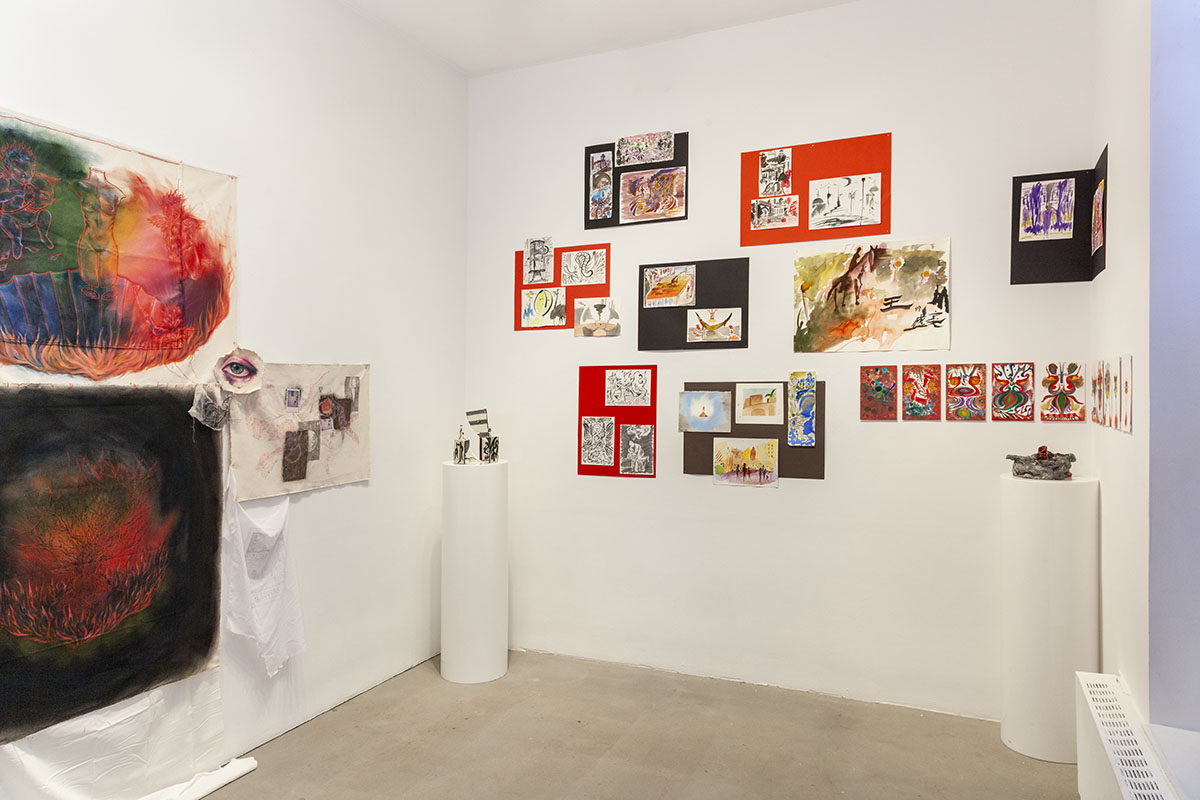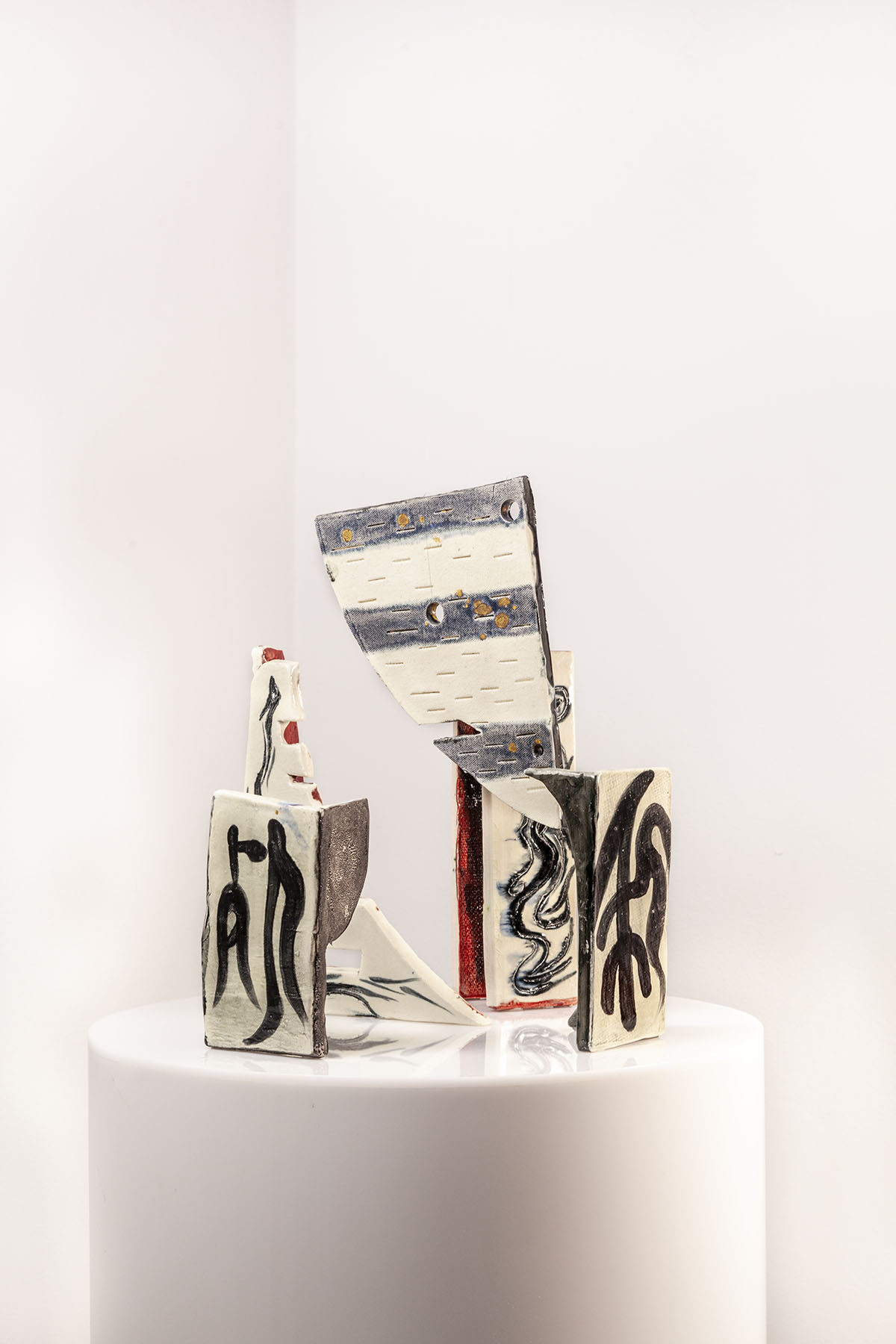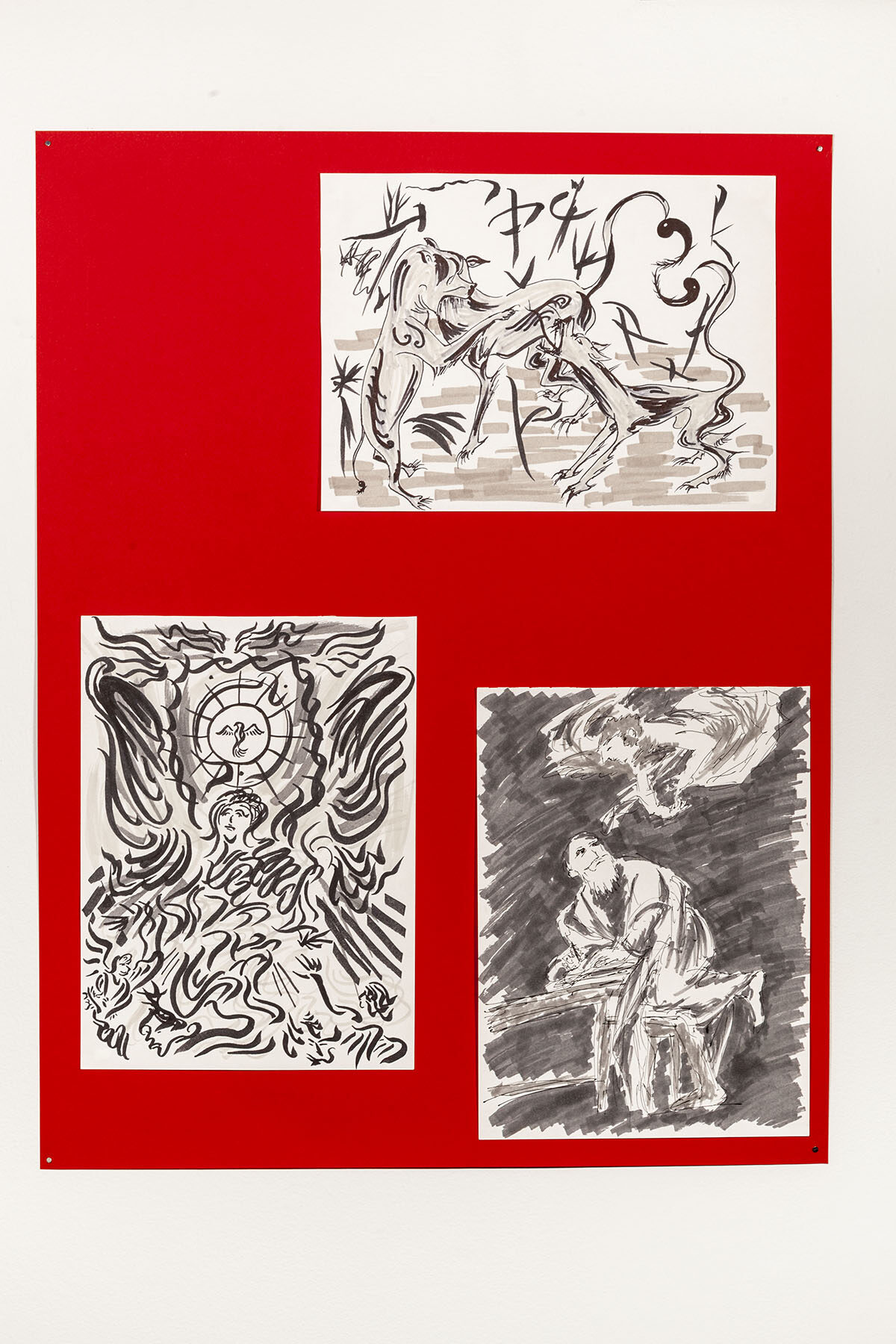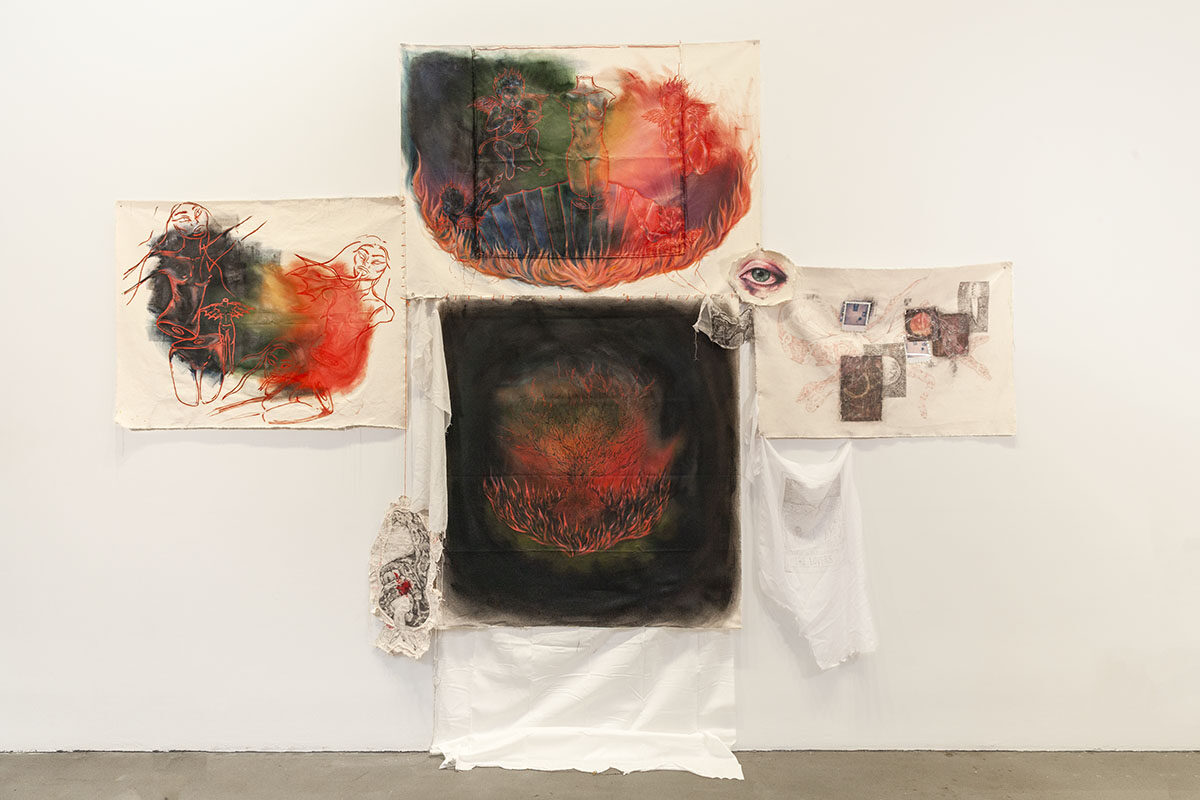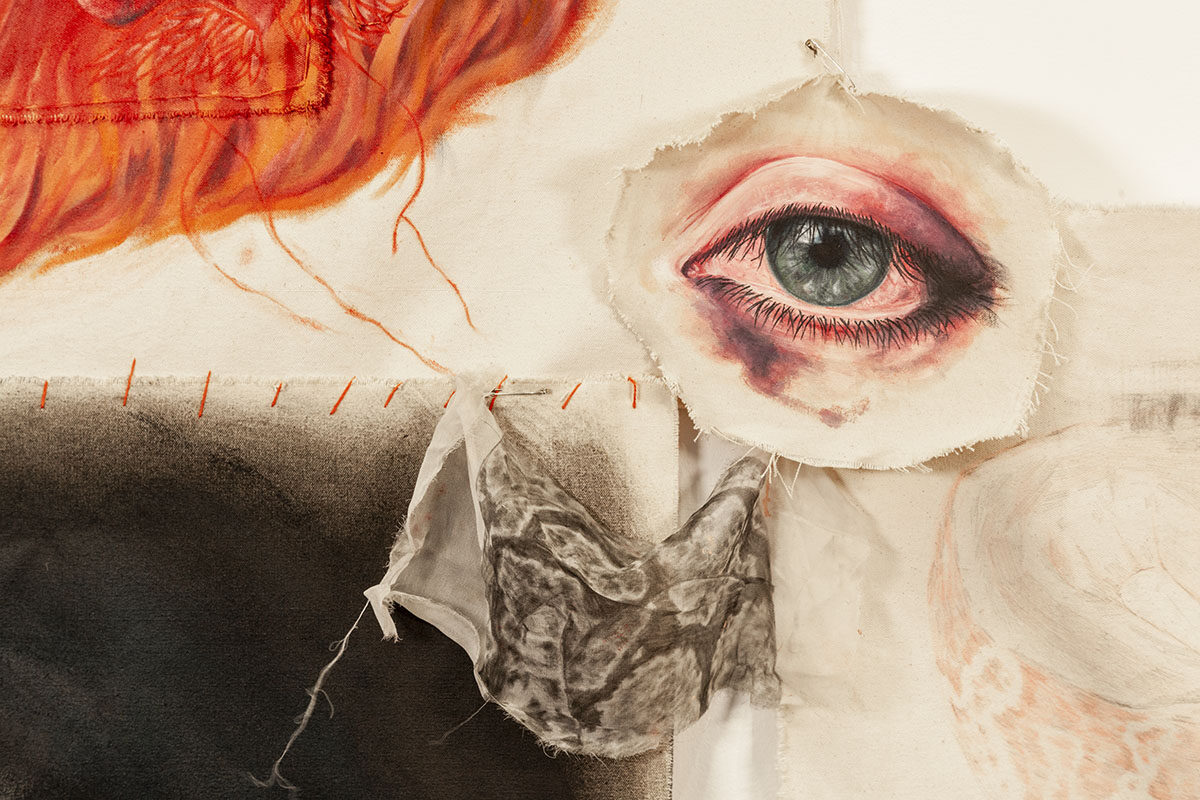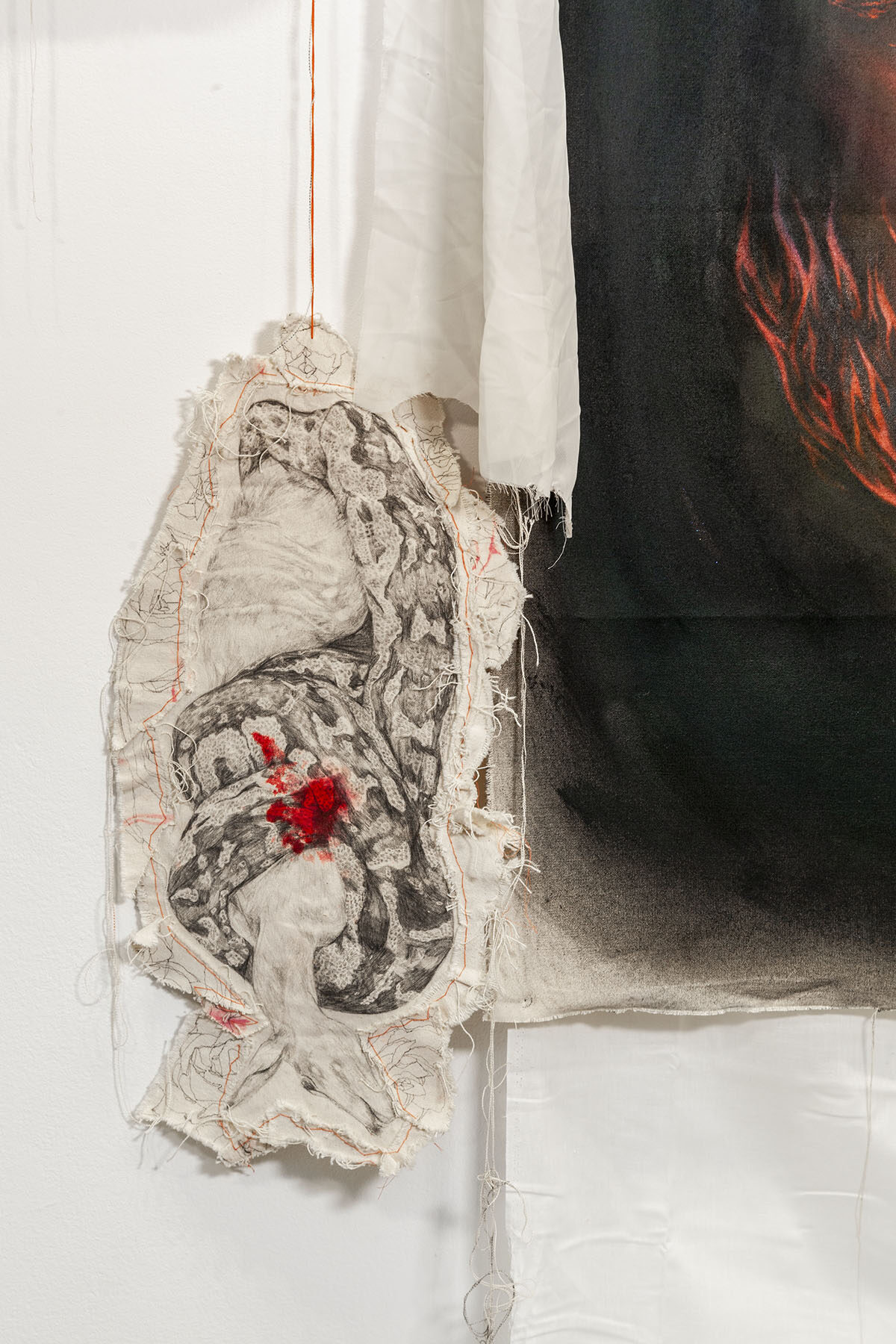February 26 – March 1, 2020
Curator: Katie Maher
Artists: Martine Velasco, Andy (Yuheng) Wang
Tracing History Through Myth
From a technical and stylistic perspective, Martine Velasco and Andy Wang’s practices could not be more distinct from one another. Their shared interest in historical themes and myth-making, however, is strikingly parallel. Wang and Velasco’s works respond to an innate human desire to understand what links the old and the new. Fusing their own familial and cultural ties with historic elements, both artists explore themes of transformation through their work.
Wang and Velasco’s mutual interests in historicity manifests itself in ways that speak to each artist’s cultural backgrounds. Wang’s colorful, carefully rendered drawings and earthenware ceramics illustrate his curiosity towards historical themes. He demonstrates a fascination with ancient Chinese and Greco-Roman traditions. The interplay between past and present in his work challenges him to retain his own artistic identity while exploring historical themes. Velasco, on the other hand, relies on ritualism in order to incorporate the past into her work. Her practice consists primarily of creating large-scale works on canvas, giving her pieces a raw and authentic quality. Experimenting with oil, charcoal and colored pencil on canvas, she employs repetitive and intuitive motions in order to achieve a sense of security in the physical gestures of her practice. Through Velasco’s incorporation of ritual and Wang’s implementation of historical motifs, both artists engage with the past as a means of juxtaposing it with the present and anticipating the future.
Both of these artists reference their respective cultural traditions as a basis for their artistic styles. For Velasco, Filipino folklore carries significant weight in her practice, while Wang weaves traditional Chinese elements into his multi media works and ceramics. Velasco’s painting ASWANG (2018) utilizes mythology as a means of exploring her cultural identity. ASWANG refers to a Filipino folklore villain, which not only demonstrates her interest in incorporating Filipino tradition in her work but also aligns with her tendency to include symbols of evil throughout her practice. Wang’s ceramic piece Ding (2019) refers to a type of ancient Chinese cooking vessel, and is decorated with reliefs of monsters in accordance with Chinese tradition. Velasco and Wang each incorporate monster motifs in their work to ground their practices in cultural iconography, mythology, and spirituality.
While both Velasco and Wang confront myth-making from the lens of their own individual cultures or experiences, they also share a joint interest in Greek mythology. Velasco’s choice of Venus as a central motif for Origins of a Goddess (2019) speaks to the artist’s fascination with Western mythology, which complements the Filipino cultural references that permeate the rest of her work. Wang also incorporates a mixture of Asian and Western motifs into his practice, adopting a distinctly Chinese approach to European subject matter. Through alluding to ancient Greco-Roman mythologies, Wang and Velasco demonstrate a keen awareness of Western artistic traditions. By mining their respective heritages, these two artists have created bodies of work that reflect both their own constantly evolving identities as well as an affinity for tradition.
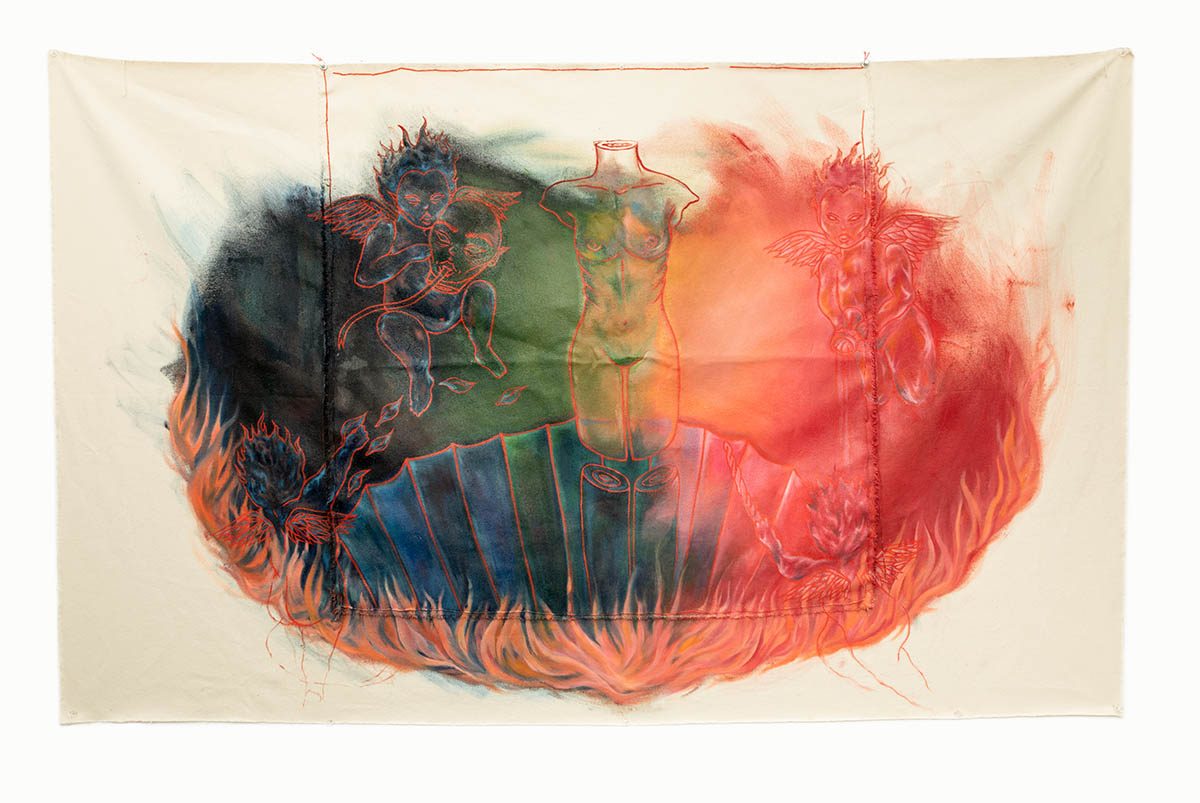 Martine Velasco, Origins of a Goddess, 2019, Painting (mixed media), 57.5” x 36.5”
Martine Velasco, Origins of a Goddess, 2019, Painting (mixed media), 57.5” x 36.5”
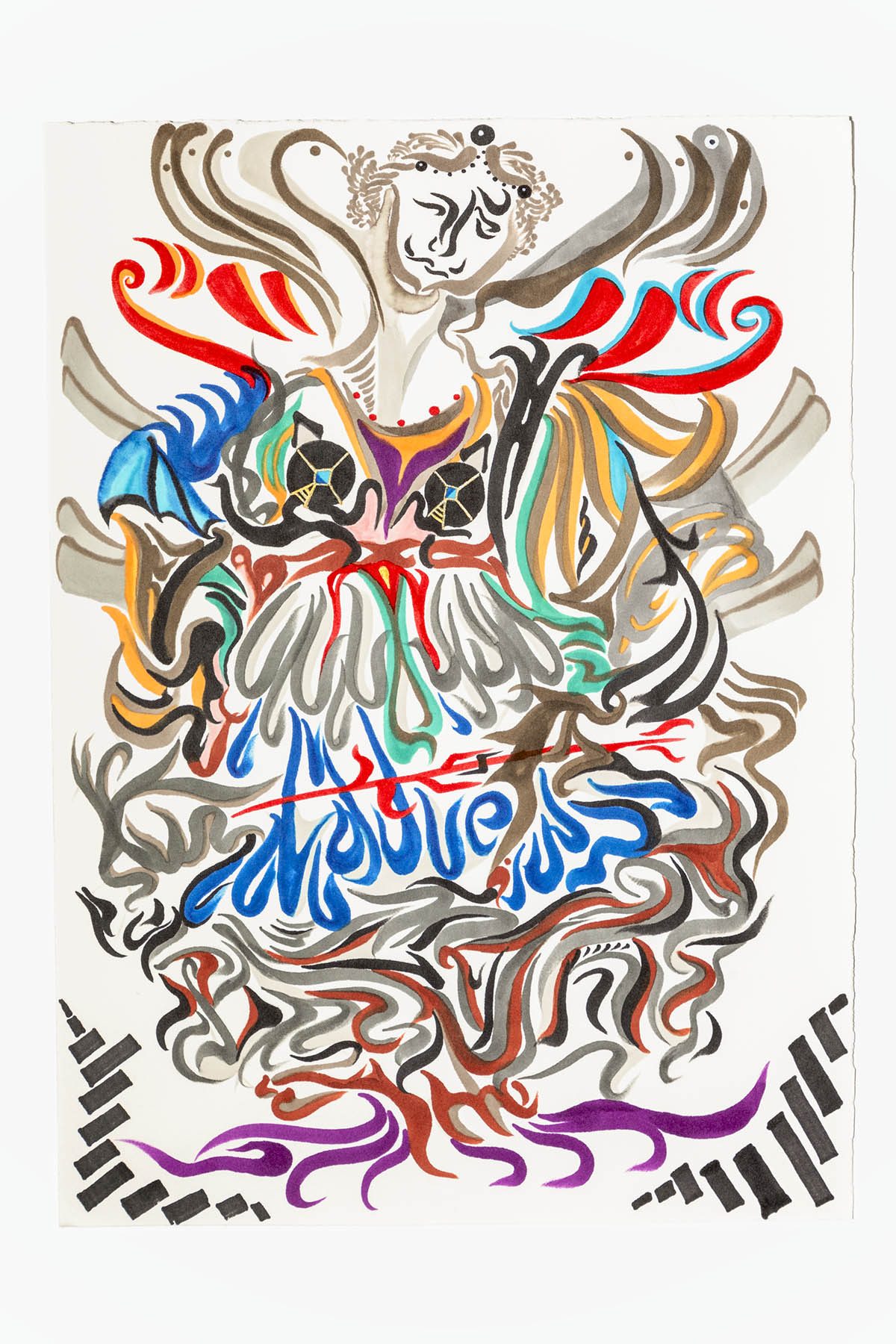 Andy (Yuheng) Wang, Seven Virtues-Fortitude, 2019, Drawing (brush markers and watercolor), 14.5” x 10.5”
Andy (Yuheng) Wang, Seven Virtues-Fortitude, 2019, Drawing (brush markers and watercolor), 14.5” x 10.5”
Exhibition Views
